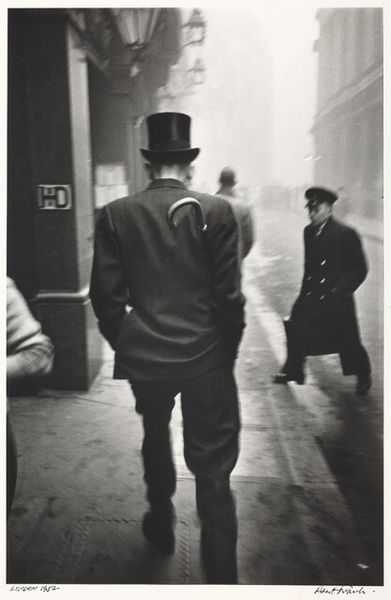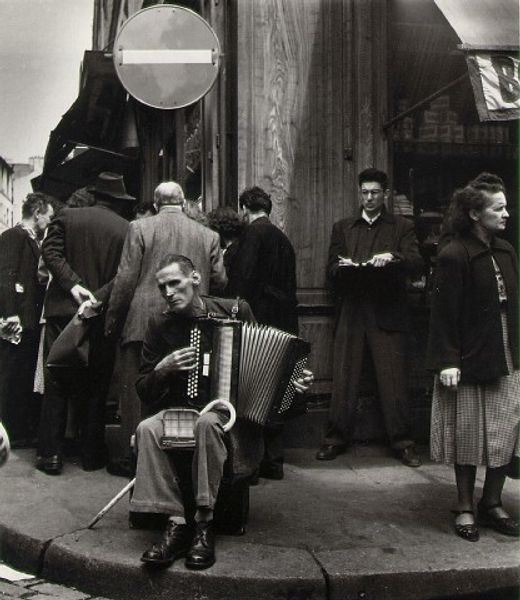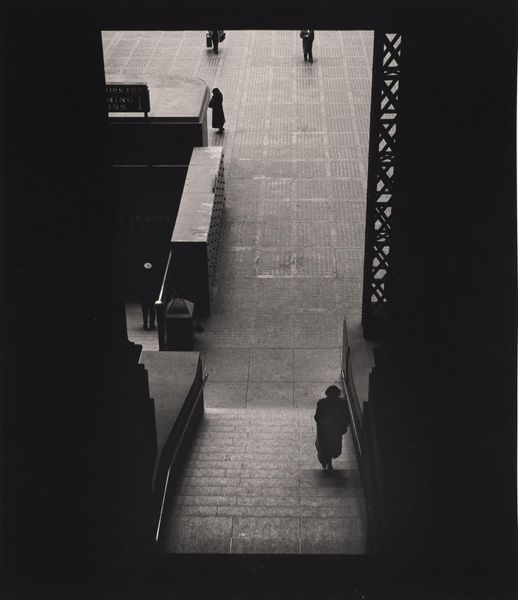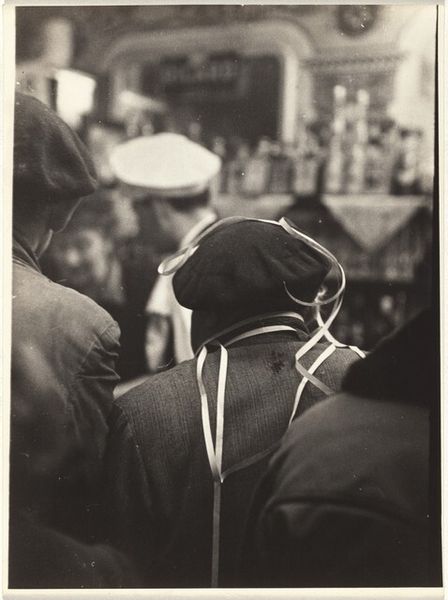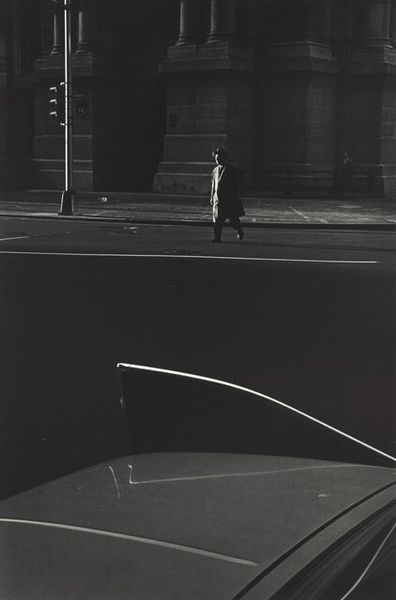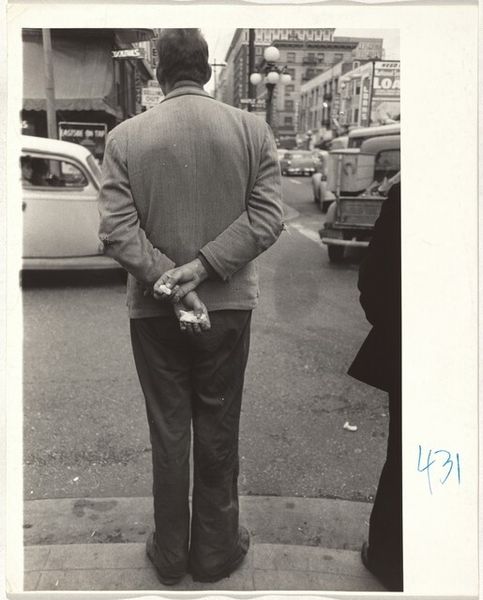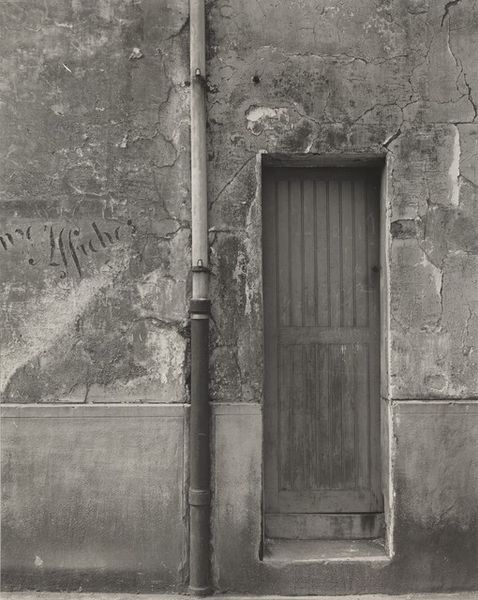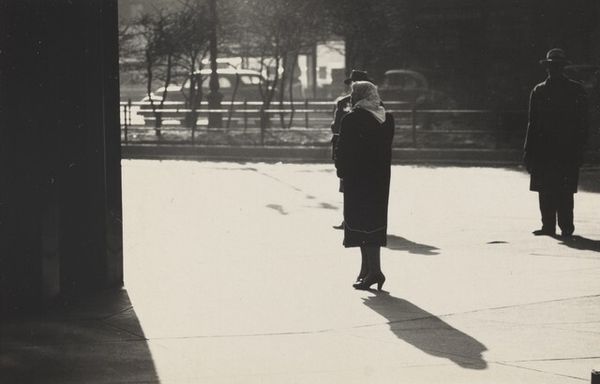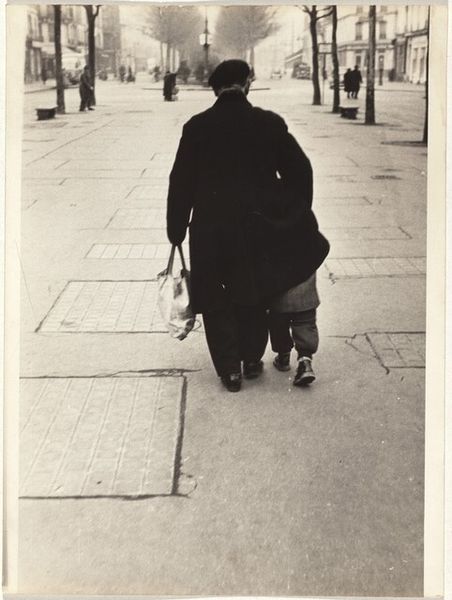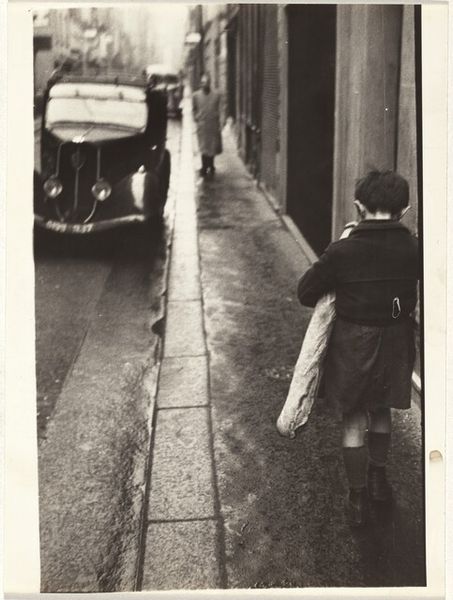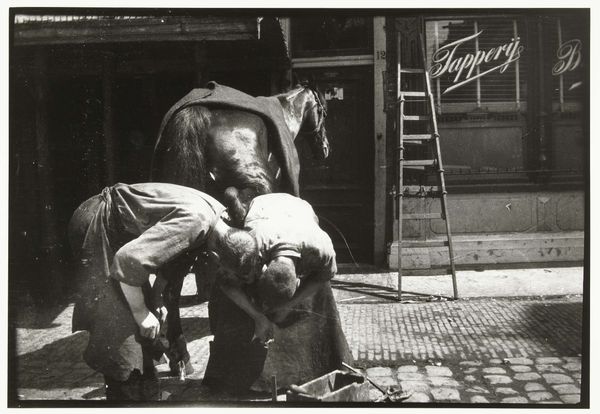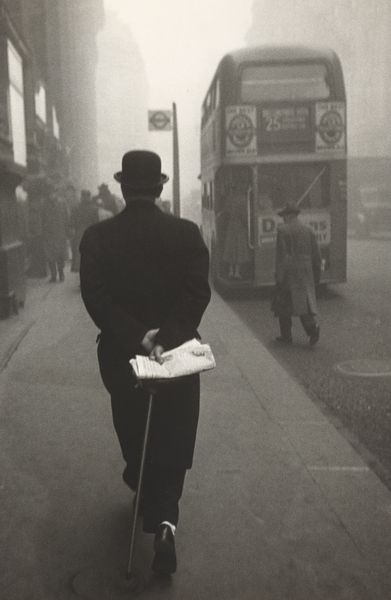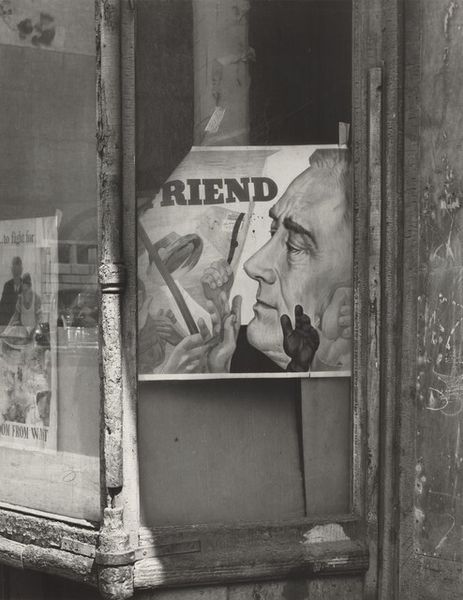
Dimensions: sheet: 32.2 x 26.4 cm (12 11/16 x 10 3/8 in.)
Copyright: National Gallery of Art: CC0 1.0
Editor: This is "The Reading Wall, Paris" by Louis Stettner, taken around 1951 or '52. It’s a gelatin silver print, and the first thing that strikes me is the contrast between the textures of the wall and the smooth paper, or rather what seems like papers. What's your take on this composition? Curator: Indeed, the interplay of textures is key. Note how the crumbling wall, scarred with age and the residue of posters, acts as a foil to the ephemeral newsprint. The figure, anonymous and absorbed, is positioned almost symmetrically, creating a strong central axis. The monochrome palette further emphasizes these tonal variations, wouldn't you agree? Editor: Yes, absolutely. It's such a restricted color range, which draws your eyes into these very specific textures. Is there anything significant about the use of monochrome here beyond this focus? Curator: Beyond emphasizing the formal qualities, monochrome reduces the distraction, urging us to concentrate on form, line, and the gradations of light and shadow. Observe the man's posture, how the lines of his body almost echo the geometry of the wall, blending in a rather curious way. The photograph subtly comments on our connection with both history (the old wall) and current events (the newspapers). Editor: I see what you mean. The figure almost disappears into the composition. So the success of the photograph relies almost entirely on the structural tension between these elements? Curator: Precisely. Stettner skillfully balances realism and abstract form, elevating the mundane into something profound, inviting reflection on time, information, and our place within it. A compelling composition indeed, focused on structure as its key tool of communicating something. Editor: It’s fascinating how much can be conveyed simply through form and texture. Thanks, I’ll certainly look at photography differently. Curator: My pleasure. Focusing on how art is composed can greatly open new perspectives for interpretation.
Comments
No comments
Be the first to comment and join the conversation on the ultimate creative platform.
